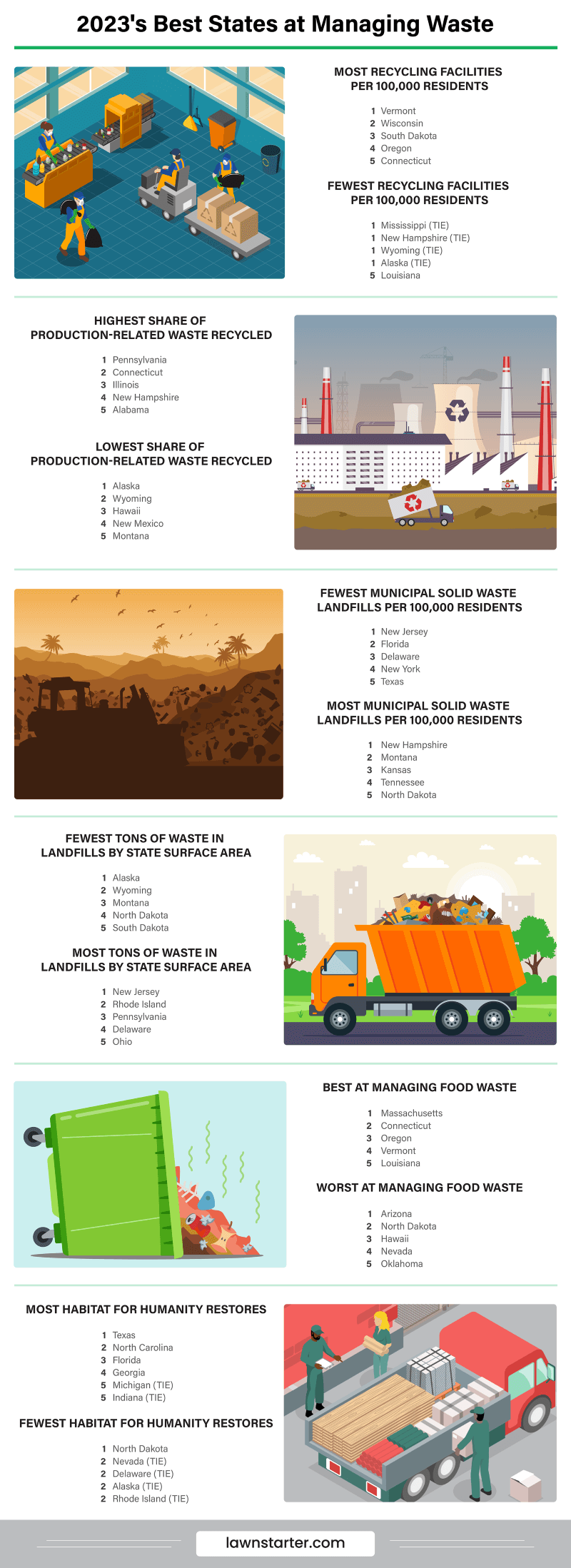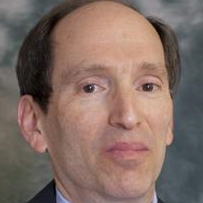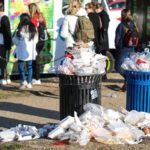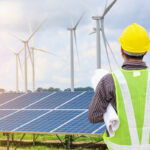
Americans are trashy — literally. On average, the U.S. produces 3X more garbage than the rest of the world, most of which ends up in our landfills.
Which states residents’ do the finest job of cleaning up after themselves?
With the most wasteful time of the year upon us again, LawnStarter ranked 2023’s Best States at Managing Waste.
We compared the 50 states based on their waste-reducing policies, infrastructure, waste production, and recycling rates.
See how your state performed in our ranking below, followed by some highlights, lowlights, and a little “trash talk” with environmental experts.
Contents
State Rankings
See how each state fared in our ranking:
| Overall Rank (1=Best) | State | Overall Score | Policies Rank | Facilities Rank | Recycling Rank | Waste Rank |
|---|---|---|---|---|---|---|
| 1 | Connecticut | 70.07 | 1 | 13 | 7 | 3 |
| 2 | California | 66.04 | 3 | 23 | 4 | 15 |
| 3 | Vermont | 64.64 | 1 | 15 | 35 | 2 |
| 4 | Oregon | 62.05 | 9 | 5 | 12 | 1 |
| 5 | New York | 61.64 | 6 | 43 | 3 | 12 |
| 6 | Maine | 60.57 | 5 | 24 | 23 | 6 |
| 7 | Iowa | 60.20 | 14 | 3 | 14 | 5 |
| 8 | Pennsylvania | 60.06 | 7 | 39 | 1 | 25 |
| 9 | Minnesota | 59.26 | 9 | 7 | 9 | 13 |
| 10 | Washington | 57.70 | 8 | 46 | 11 | 4 |
| 11 | Illinois | 55.49 | 16 | 26 | 5 | 17 |
| 12 | Virginia | 52.98 | 13 | 17 | 15 | 30 |
| 13 | North Carolina | 52.94 | 12 | 19 | 13 | 38 |
| 14 | Wisconsin | 52.56 | 9 | 6 | 17 | 43 |
| 15 | Indiana | 52.32 | 14 | 25 | 10 | 33 |
| 16 | New Jersey | 51.83 | 4 | 44 | 8 | 50 |
| 17 | Texas | 51.59 | 19 | 33 | 6 | 22 |
| 18 | Michigan | 51.23 | 19 | 11 | 18 | 19 |
| 19 | Massachusetts | 50.01 | 27 | 28 | 20 | 8 |
| 20 | Alabama | 47.34 | 40 | 8 | 2 | 21 |
| 21 | Utah | 46.20 | 22 | 14 | 37 | 23 |
| 22 | Rhode Island | 45.61 | 17 | 48 | 19 | 44 |
| 23 | Ohio | 45.44 | 24 | 35 | 26 | 24 |
| 24 | Maryland | 44.15 | 23 | 30 | 35 | 26 |
| 25 | Mississippi | 43.96 | 19 | 21 | 39 | 35 |
| 26 | Georgia | 42.91 | 29 | 10 | 27 | 46 |
| 27 | South Carolina | 42.83 | 27 | 12 | 31 | 41 |
| 28 | Colorado | 42.17 | 39 | 18 | 21 | 16 |
| 29 | Delaware | 41.82 | 26 | 38 | 22 | 48 |
| 30 | South Dakota | 41.27 | 30 | 2 | 44 | 31 |
| 31 | Nebraska | 40.65 | 45 | 4 | 33 | 14 |
| 32 | Arkansas | 40.62 | 38 | 9 | 38 | 11 |
| 33 | Missouri | 40.37 | 36 | 47 | 16 | 29 |
| 34 | Idaho | 40.14 | 34 | 31 | 43 | 7 |
| 35 | New Hampshire | 40.11 | 25 | 50 | 25 | 32 |
| 36 | Louisiana | 39.36 | 40 | 37 | 34 | 9 |
| 37 | Hawaii | 38.99 | 18 | 16 | 48 | 45 |
| 38 | New Mexico | 38.69 | 31 | 27 | 42 | 20 |
| 39 | Florida | 38.27 | 43 | 34 | 24 | 28 |
| 40 | North Dakota | 38.20 | 34 | 1 | 46 | 40 |
| 41 | Kansas | 37.77 | 46 | 40 | 32 | 10 |
| 42 | West Virginia | 37.12 | 31 | 29 | 40 | 42 |
| 43 | Oklahoma | 36.41 | 37 | 32 | 28 | 39 |
| 44 | Wyoming | 35.48 | 31 | 42 | 45 | 27 |
| 45 | Kentucky | 35.06 | 46 | 22 | 29 | 37 |
| 46 | Tennessee | 32.73 | 49 | 36 | 30 | 36 |
| 47 | Arizona | 28.29 | 50 | 20 | 41 | 47 |
| 48 | Montana | 27.78 | 40 | 49 | 49 | 34 |
| 49 | Nevada | 24.59 | 44 | 45 | 47 | 49 |
| 50 | Alaska | 24.56 | 46 | 41 | 50 | 18 |

Highlights and Lowlights
Top of the Waste-Management Heap
The North swept our ranking this year, with silver medalist California being the only exception. States in upper latitudes claimed nine of our top 10 spots. Connecticut finished first overall. Minnesota (No. 9) represents the Midwest, while Washington brings honor to the West Coast at No. 10.
Each of these states ranked in the top 10 of our “Policies” category — apart from Iowa at No. 14 — and in the top 15 of our “Waste” metrics, showing their policies work. Many of these Northern states also are leading recyclers and trailblazers of the Pay-As-You-Throw program.
Even model states have room for improvement. New York and Washington, for example, fared among the worst in “Facilities.” Vermont needs greater focus on recycling more of its hazardous and production-related waste.
Down in the Dumps
In contrast with our top 10 states, there’s no clear regional pattern among our 10 worst performers, with Alaska in last place overall.
Other states at the bottom of our ranking include Nevada (No. 49), Kentucky (No. 45), and West Virginia (No. 42), with at least one state representing every other region. Among the worst five, the West fared slightly worse, making up 80% of the five states.
Each state ranked poorly across all categories, with a couple of exceptions. In the “Waste” category, Kansas ranked 10th, owing to its excellent management of food waste. Meanwhile, Alaska landed at No. 18 in the same category, thanks to its great performance in two out of four factors: tonnage of landfilled waste and RSEI Score.
Treasure Among the Trash
Although North Dakota ranked 11th worst overall for waste management, it deserves special recognition for its dominance over the “Facilities” rank.
Zooming in on individual factors in that category, the Flickertail State came in first for the most large-waste facilities and the fewest hazardous-waste sites and recyclers. It also ranked well above average in the number of recycling facilities. (The numbers of all facilities were adjusted by population size.)
However, the state operates many solid-waste landfills. North Dakota ranked No. 46 (or fifth-worst) in this metric despite the proliferation of recycling facilities. Because North Dakota is a largely rural state, residents are widely spread out. The lack of density has made it difficult to mandate a statewide recycling program, so much of the waste ends up as trash.
Tiny States, Giant Problems
Size matters when it comes to waste management. For America’s two smallest states by land area, that’s the biggest challenge: Their borders aren’t expanding, but their trash problems are.
Once again, Rhode Island and Delaware ranked among the bottom five states in landfill waste volume.
Rhode Island’s Central Landfill stands to reach full capacity in just 12 years. However, the state’s only municipally owned landfill in Tiverton will temporarily divert its waste to Central, theoretically shortening its remaining lifespan.
Delaware also is racing against time, as some proposed solutions like “vertical expansion” of a landfill continues to meet legal challenges.
Ask The Experts
Solving the waste problem requires smart solutions. That’s why it’s important to study and emulate other countries’ best practices for waste management.
We turned to experts for insights. Read their thoughts below.
- What are a few simple things we can do to cut down on the amount of waste we generate in the U.S.?
- What is your biggest concern about how much waste the U.S. generates, and how do you think that concern should be addressed?
- Which countries are doing the best job at managing waste, and what can the U.S. learn from them?






What is your biggest concern about how much waste the U.S. generates, and how do you think that concern should be addressed?
Well, what I find most disappointing about our residential waste management is that so many people don’t bother to separate their waste, as they are asked to do, and that makes reusing the reusables and recycling the recyclables much more difficult and expensive.

What are a few simple things we can do to cut down on the amount of waste we generate in the U.S.?
Very simply, buy less. Look at your trash and think about what you are disposing of that you did not use.
What is your biggest concern about how much waste the U.S. generates, and how do you think that concern should be addressed?
Waste is often transported long distances for disposal or treatment. Locally managing waste will reduce environmental impacts.
Which countries are doing the best job at managing waste, and what can the U.S. learn from them?
It is not a good idea to rank countries’ waste management success by simple statistics (recycling rates, amount generated per person, etc.).
Every country has its own circumstances (economics, land availability, recycling infrastructure), so each country (and region in large countries such as the U.S.) should have a MSW system that is appropriate for its specific conditions.

What are a few simple things we can do to cut down on the amount of waste we generate in the U.S.?
Buying processed foods and other processed materials, using of recycle materials as well as composting food waste at home level can reduce 20-30% of solid waste generation in the U.S.
What is your biggest concern about how much waste the U.S. generates, and how do you think that concern should be addressed?
My biggest concern is the people education about the solid waste generation and source separation and segregation. Educating people about the implications of waste generation can help reduce the waste generation.
Which countries are doing the best job at managing waste, and what can the U.S. learn from them?
I have done a comparative study of solid waste generation and handling. I found that the EU is doing better than the USA and that can help the U.S. learn.

What are a few simple things we can do to cut down on the amount of waste we generate in the U.S.?
Take responsibility for your own waste. Look in your garbage can and let that guide your efforts.
The heaviest portion for most people is probably food waste like coffee grounds and banana peels. Food waste sent to landfills turns into methane, a potent greenhouse gas.
Finding a way to compost food waste is the best way to reduce waste if you can.
Try to avoid packaging as much as you can, especially plastic and plastic bags.
There is no silver bullet, just lots of thoughtful little steps. Let your garbage can be your guide.
What is your biggest concern about how much waste the U.S. generates, and how do you think that concern should be addressed?
Waste (food, paper, metal, textiles, plastic, etc,) is just the downstream aspect of consumption and economic growth.
The U.S. has 5% of the world’s population but makes 20% of the waste. Earth’s resources are finite and our level of consuming/wasting may not be sustainable, especially as other countries aspire to high-consumption lifestyles like ours too.
We need to reduce, reuse, recycle, and compost as much as we can now and support efforts toward the higher goal of a circular economy which designs for reuse and recycling rather than waste.
Which countries are doing the best job at managing waste, and what can the U.S. learn from them?
I’m not really qualified to answer this question country by country, but, in general, places that enact strong waste policies like mandatory recycling access or plastic bag bans, invest in compost and recycling infrastructure, and have strong civic values, have less waste.

What are a few simple things we can do to cut down on the amount of waste we generate in the U.S.?
If our concern is about the climate crisis, the most important thing we can do is to reduce food waste.
Reducing food waste is among the top three or four actions we can take to draw down greenhouse gases in the atmosphere according to the Drawdown Project www.drawdown.org. And it’s something anyone can do— by paying attention to how we shop, how much we cook, and how much we put on our plates.
Plus, reducing food waste saves us money.
Some helpful resources for reducing food waste are available at the Love Food Hate Waste website. Also, information is available at the ReFED website.
Yard wastes can be composted using aerobic systems to reduce methane emissions. If you have a compost pile turn it to avoid methane buildup.
Methane, a byproduct of anaerobic breakdown of organic wastes, is a major contributor to greenhouse gases.
Of course, plastics is a major concern also, given that recycling plastics is not easy and not widely practiced.
Pay attention to how much plastics we use, put pressure on businesses by talking with your grocery store or restaurant or writing letters to industry or the local paper, and support policies to reduce single use plastics.
What is your biggest concern about how much waste the U.S. generates, and how do you think that concern should be addressed?
My biggest concern is food waste followed by plastic waste.
I think we need to use an all-hands-on-deck approach to reduce waste because we are all playing a role in producing waste — from the individual consumer to the multinational corporation.
So, we need to examine our household and consumer practices, work with our grocery stores to help them adopt practices such as avoid “buy-one, get-one-free deals” and large package sizes that encourage consumers to buy food they don’t need, and work with local legislators to implement curbside pickup of yard and food wastes.
Similarly, we need to work from the household to the business to the policy level to reduce single-use plastics. We can also join an organization that helps repurpose food waste — such as food banks that collect unused food from restaurants and grocery stores.
Which countries are doing the best job at managing waste, and what can the U.S. learn from them?
Sorry, I don’t know the answer to this question, but in terms of food waste, the Love Food Hate Waste campaign originated in UK and has spread to other countries.
It has the most comprehensive set of resources of any food waste organization I have seen, and the UK has also led in research on how to reduce food waste.
Methodology
For each of the 50 U.S. states, we gathered publicly available data on the factors listed in the table below.
We then grouped those factors into four categories: Policies, Facilities, Recycling, and Waste.
Next, we calculated weighted scores for each state in each category.
Finally, we averaged the scores for each state across all categories.
The state that earned the highest average score was ranked “Best” (No. 1), while the state with the lowest was ranked “Worst” (No. 50). (Note: The “Worst” among individual factors may not be No. 50 due to ties.)
| Metric | Weighting | Min. Value | Max. Value | Best |
|---|---|---|---|---|
| Policies | ||||
| Mandatory Recycling Laws Present | 3 | 0 | 1 | Max. Value |
| Multifamily Recycling Policies Present | 2 | 0 | 3 | Max. Value |
| Electronic Waste Recycling Programs Present | 2 | 0 | 1 | Max. Value |
| Plastic Bag Bans Present | 2 | -1 | 2 | Max. Value |
| Beverage Container Deposit Laws Present | 2 | 0 | 1 | Max. Value |
| Yard Debris Bans Present | 1 | 0 | 2 | Max. Value |
| Facilities | ||||
| Recycling Facilities per 100,000 Residents | 3 | 0 | 0.31 | Max. Value |
| Large-Waste Facilities per 100,000 Residents | 3 | 0.09 | 1.42 | Max. Value |
| Municipal Solid-Waste Landfills per 100,000 Residents | 1 | 0 | 3 | Min. Value |
| Hazardous-Waste Sites per 100,000 Residents | 1 | 0 | 2 | Min. Value |
| Hazardous-Waste Recyclers per 100,000 Residents | 1 | 0 | 1 | Min. Value |
| Recycling | ||||
| Recycling Rate for Common Containers and Packaging Materials | 3 | 0% | 100% | Max. Value |
| Tons of Hazardous Waste Recycled | 3 | 0 | 498,548 | Max. Value |
| Share of Production-Related Waste Recycled | 3 | 0.03% | 92.19% | Max. Value |
| Share of Production-Related Waste Managed for Energy Recovery | 2 | 0.00% | 57.31% | Max. Value |
| Share of Production-Related Waste Treated | 1 | 0.11% | 86.92% | Max. Value |
| Share of Production-Related Waste Disposed of or Released | 1 | 1.25% | 99.86% | Min. Value |
| Number of Clothing Donation Locations | 1 | 5 | 100 | Max. Value |
| Number of Habitat for Humanity ReStores | 1 | 2 | 62 | Max. Value |
| Number of Car Junkyards | 1 | 4 | 1,212 | Max. Value |
| Waste | ||||
| Tons of Waste in Landfills by State Surface Area | 3 | 35 | 30,619 | Min. Value |
| Pounds of Toxic Chemicals Released per Square Mile | 1 | 44,884 | 4.2 Million | Min. Value |
| Risk-Screening Environmental Indicator Score | 1 | 301 | 75.9 Million | Min. Value |
| Food Waste Management | 4 | 1 | 50 | Max. Value |
Sources: Ball Corporation, ClotheDonations.com, Environmental Finance Center at the University of North Carolina-Chapel Hill, Habitat for Humanity, Other LawnStarter Studies, The Recycling Partnership, National Conference of State Legislatures, Northeast Recycling Council, Salvage-Parts.com, U.S. Environmental Protection Agency, and US Composting Council
Cleaning Up Our Act
America has a big, stinky problem. Not only is the U.S. the most wasteful country in the world, but we also are among the worst at managing our waste.
How bad is the problem?
The average American throws away 4.9 pounds of trash per day, or 34.3 pounds per week.
Between Thanksgiving and New Year’s, we add up to 43% extra waste to that total, or an additional 29 pounds per week, nearly doubling our typical weekly total. Altogether, that amounts to about four average-sized turkeys per week or 16 per month during the holiday season.
Where does all of that waste go?
Most of it ends up in our landfills, nearly a quarter of which are on track to reach capacity — and therefore close — within the next decade. The rest either gets recycled, composted, or burned to generate electricity.
What’s the impact?
For many of us, once our trash is out of sight, it’s out of mind. But it all comes back in one form or another: Dangerous chemicals produced by our waste can end up in our water, air, and even everyday products, leading to disease or death.
How do we kick our wasteful habits?
On a macro level, it begins by understanding the extent of the problem, which this LawnStarter study aims to spotlight.
Other ways states can better manage waste, experts say, include incentivizing residents to throw away less by charging more per pound of trash. That or enforce stronger recycling rules, which 94% of U.S. consumers support. Thankfully, 35 states have introduced recycling bills over the past couple of years.
How can consumers help?
We can do our part by reducing waste and disposing of it properly to avoid hazards. This goes for yard debris, too. Grass clippings left on the street, for example, are unsightly and can be deadly for motorcyclists.
So, this holiday season — and year-round — be more mindful of what you discard and how you discard it.
Main Photo Credit: Shutterstock





